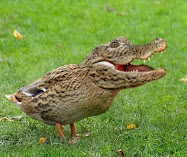The Bowes Museum is located near Barnard Castle in Teesside (or whatever the hell Teesside is called these days) and was built in 1869 in the style of a French chateau by the Bowes family, a famous member of which was Elizabeth Bowes-Lyon, who later became better known as the Queen Mother. She was a patron of the museum and it was apparently her favourite place too, so I’m in good company. Maybe, just maybe, this is where she got her famous liking for swans?
It makes me sound terribly intellectual doesn't it? My favourite place is a place of education and austerity, but my fondness grew not just because of the exhibitions but because of the place itself and the hours I spent there as a child in the gorgeous gardens, wandering around the magnificent halls and up and down the imposing staircase, in the heart of the building. I would be that strange child who spent an hour just sitting on the staircase, gazing around in awe, or looking intently at things which other people couldn’t quite fathom could be that interesting. Also my love of the place came from the wonders I found there, things which fascinated me and terrified me at the same time, like
the two-headed calf , which I often used to peer suspiciously at, expecting it to move, or I would stand staring into one or the other of its faces to try to see some indication as to how it felt being a freak of nature. Although there were always plenty of people about the place I easily felt a personal connection with the spirit of the building itself, as if it spoke to me only, and would eventually feel completely alone there and tranquil, usually getting in the way of all the other people rushing around.
Of course my trick of sitting on the staircase wasn’t totally without purpose, as I would get myself in a prime position to watch the performance of
the silver swan which resided in a glass case in the centre of the lobby. It dates back to 1773 and is life-sized and solid silver, apart from the glass rods on which the swan sits, which go backwards and forwards to represent water flowing. There are also little silver fish which raise up and down when the mechanism works. This was a bewildering magical creature to me when I was young, barely tall enough to see up inside the glass casing where she lived. She sat there perfectly still for hours and then would wake up and catch a fish right in front of my eyes. Now I know the fish was in its mouth all the time, but then I imagined it catching it out of the shimmering silver pond underneath and was amazed at how she could do it every time. Not quite understanding how a contraption could do this without actually properly becoming alive I liked to imagine that she did come alive, just for a few moments whilst I watched her.
Mark Twain also saw the Silver Swan and described it in his book “The Innocents Abroad”:
‘I watched the Silver Swan, which had a living grace about his movement and a living intelligence in his eyes - watched him swimming about as comfortably and unconcernedly as if he had been born in a morass instead of a jeweller’s shop - watched him seize a silver fish from under the water and hold up his head and go through the customary and elaborate motions of swallowing it...'
You can watch it in action here:
http://www.youtube.com/watch?v=TGEOz5WUev0
For more information about the place -
http://www.thebowesmuseum.org.uk/ or
http://en.wikipedia.org/wiki/Bowes_Museum
.






